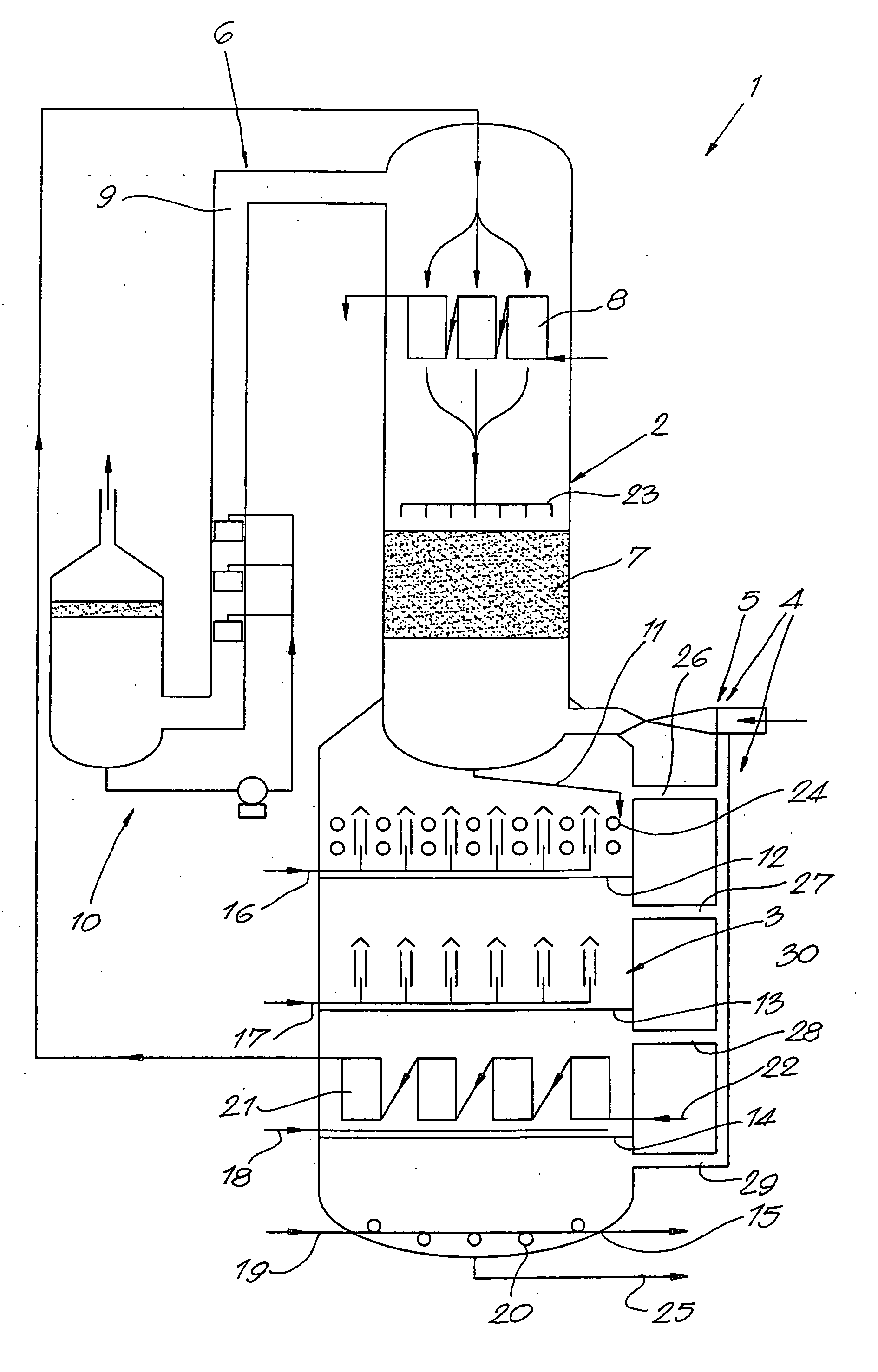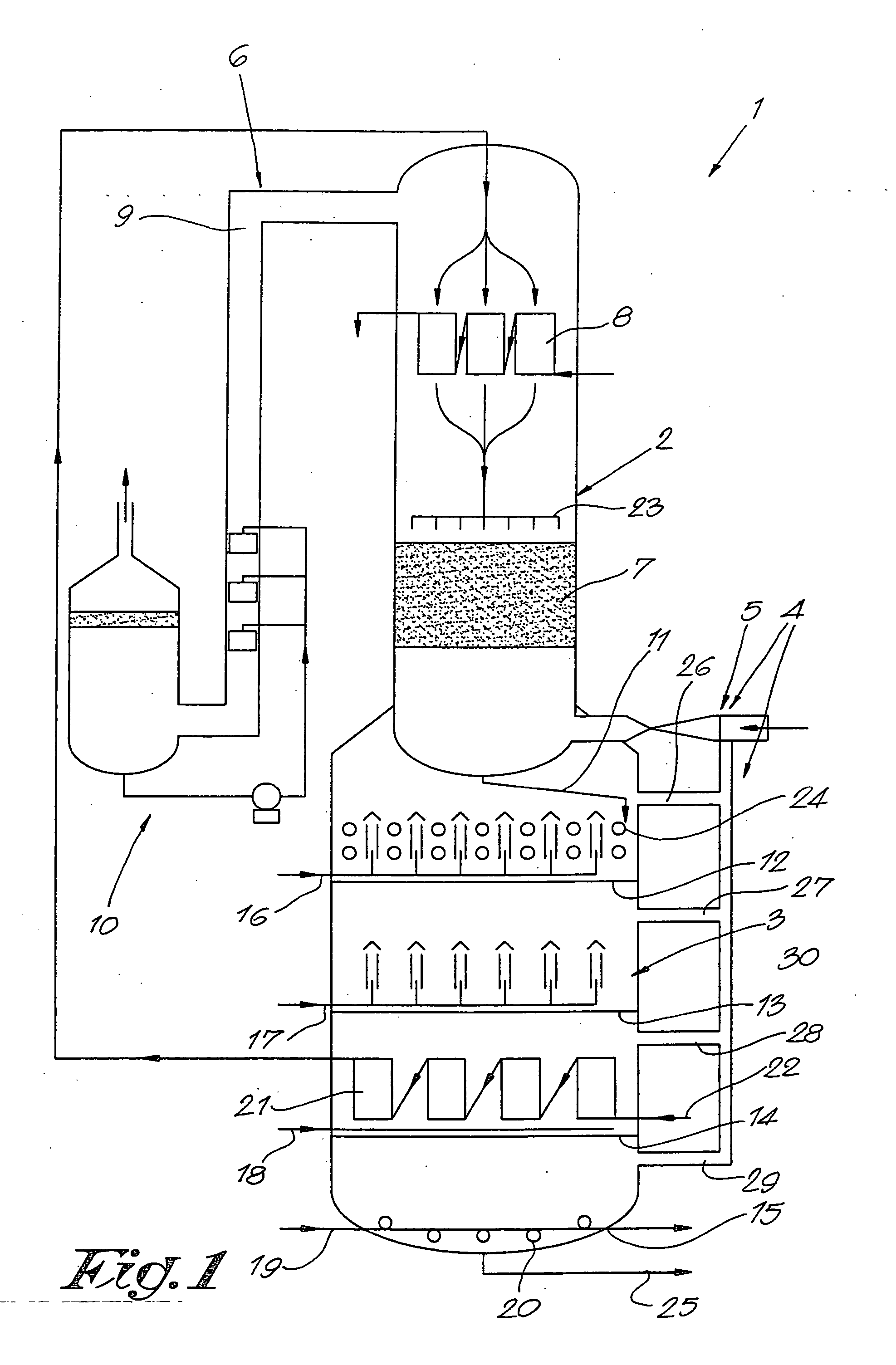Method and apparatus for vacuum stripping of oils and fats
- Summary
- Abstract
- Description
- Claims
- Application Information
AI Technical Summary
Benefits of technology
Problems solved by technology
Method used
Image
Examples
example 2
[0057] If now the second stripping vessel 3 is equipped with two trays 12 and 13 in accordance with the invention, the situation will be quite different from that of example 1. The volatile concentration in the vapour before compression would be only (0.5+0.25)V / (2*S+(0.5+0.25)V) or, after simplification 0.75*V / (2*S) 0.38*V / S, which is lower than the value of 0.5*V / S calculated for the single tray situation. After compression this concentration would increase to 2*0.38V / (1.4*S) or 0.54 V / S. This means that the compressed vapour stream will not be supersaturated with respect to the oil leaving the first stripping vessel 2 and consequently, no volatile components will dissolve in the oil being stripped in this vessel 2. On the contrary, the vapour stream can still accommodate some volatile compounds at the pressure pertaining at the bottom end of said first stripping vessel 2 and will strip out more volatile compounds when it rises to areas of lower pressure and is brought into contac...
example 3
[0059] In order to illustrate the apparatus that can be profitably used in the process according to the invention, reference is again made to FIG. 1, giving a cross section of a deodoriser apparatus for performing the invention. This deodoriser comprises or consists of a shell, having an upper first stripping vessel 2 and a lower second stripping vessel 3.
[0060] De-gummed and bleached oil with a free fatty acid content of 5% by weight, calculated on the basis of oleic acid, is supplied to the deodoriser by a pump (not shown) via a heat exchanger 21 located in the second stripping vessel 3, where the incoming oil is pre-heated by the outgoing oil and via a further heater 8 located in the first stripping vessel 2, where the pre-heated oil is brought to process temperature by indirect heating with high pressure steam.
[0061] From the heater 8, the oil flows down through the packing 7 located in the first stripping vessel 2, whereby a distributor 23 ensures, an even distribution of the...
PUM
 Login to View More
Login to View More Abstract
Description
Claims
Application Information
 Login to View More
Login to View More - R&D
- Intellectual Property
- Life Sciences
- Materials
- Tech Scout
- Unparalleled Data Quality
- Higher Quality Content
- 60% Fewer Hallucinations
Browse by: Latest US Patents, China's latest patents, Technical Efficacy Thesaurus, Application Domain, Technology Topic, Popular Technical Reports.
© 2025 PatSnap. All rights reserved.Legal|Privacy policy|Modern Slavery Act Transparency Statement|Sitemap|About US| Contact US: help@patsnap.com


